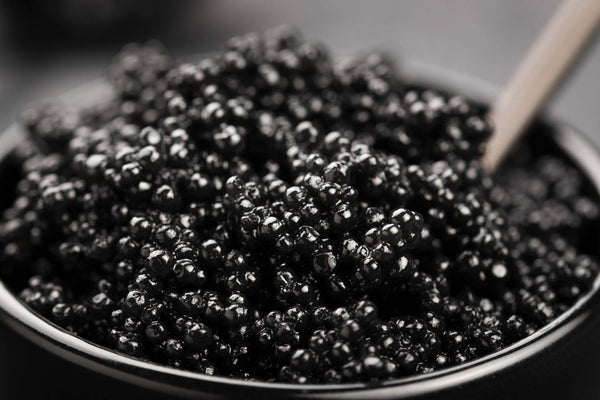7 World’s Most Expensive Fish to Eat, But are Worth the Price Tag
Updated on Aug 13, 2025
Around the world, there are rare and highly prized fish that sell for jaw-dropping prices — not just because they taste amazing, but also because they’re hard to catch, tricky to prepare, or available only in certain places.
From buttery Bluefin tuna that’s the star of high-end sushi to the dangerous-yet-delicate fugu, these aren’t your everyday grocery store finds. In this list, we’ll dive into seven of the world’s most expensive fish you can eat — and explore why food lovers say they’re worth every bite.
7 World’s Most Expensive Fish to Eat, But are Worth the Price Tag
After exploring the world’s oceanic treasures, let’s dive deeper, one bite at a time, into these seven elite seafood stars that not only dazzle the palate but also carry price tags that reflect their rarity, tradition, and flavor.
1. Bluefin Tuna
Bluefin tuna has long been the crown jewel of high-end sushi, prized for its rich, buttery belly meat known as toro. In Japan, the first bluefin of the New Year auction is believed to bring good fortune, sometimes selling for astronomical sums — one fish fetched over $3 million in 2019.
Its scarcity, coupled with unmatched taste and deep cultural significance, makes it a luxury few can afford regularly.
While record-breaking auctions grab headlines, high-grade bluefin can still cost around $34 per pound at specialty markets.
2. Wild King Salmon
Wild king salmon, also called Chinook, is celebrated for its vibrant orange flesh and velvety texture.
Known as the richest-tasting of all salmon species, it’s caught in limited quantities compared to farmed varieties, which drives up its value. Chefs love its high fat content, which gives it a naturally buttery flavor.
In specialty seafood markets, premium fillets often sell for about $36 per pound, while certain restaurant-grade or luxury-packaged offerings can reach as high as $75 per pound.
3. Fugu (Pufferfish)
Fugu, or pufferfish, is one of the most famous — and dangerous — delicacies in the world. Containing a potent toxin, it can only be prepared by chefs who have undergone years of rigorous training and licensing.
In Japan, fugu dining is an experience of both thrill and trust, with diners paying for the precision and skill behind every slice.
Prices vary, but fresh cuts can range from $3 to $13 per pound, with elaborate multi-course fugu meals costing much more.
4. Turbot
Turbot is a flatfish held in high esteem by fine dining chefs for its delicate flavor and firm, white flesh. Often served in upscale European restaurants, it’s either wild-caught in limited supply or sustainably farmed, both of which contribute to its elevated cost.
Prices for farmed turbot typically range from $10.73 to $15.16 per kilogram, while wild-caught specimens can command much more — up to about $30.81 per kilogram for large fish — placing it firmly among the more expensive options in gourmet markets.
5. Mahi Mahi
Mahi mahi, with its dazzling golden-green skin and firm, slightly sweet meat, is a tropical favorite. Despite being more common than some species on this list, it commands a premium because of its freshness, appealing texture, and versatility in cooking.
The best-quality mahi mahi comes from carefully managed fisheries, which helps maintain its value, with prices reaching about $21.99 per pound — or roughly $48.50 per kilogram — in specialty seafood markets.
6. Beluga Sturgeon Caviar
Beluga sturgeon caviar is the epitome of seafood luxury. Harvested from sturgeon that can take decades to mature, its large, glossy eggs have a smooth, buttery taste that has enchanted royalty and gourmets for centuries.
The rarest variety, Almas caviar from albino sturgeon, can sell for over $34,000 per kilogram. Even standard beluga caviar is costly, with prices starting at around $105 per ounce and soaring for premium grades.
7. Red Snapper
Red snapper is loved for its clean, mildly sweet flavor and versatility in cooking, from whole roasted preparations to delicate fillets.
True wild-caught red snapper is less common than the name suggests — many fish sold under this label are actually other species — so genuine, sustainably sourced snapper comes at a higher price. In U.S. markets, quality wild red snapper often costs around $13 per pound.
BONUS: Expensive Seafoods
Beyond these prized fish, the sea offers other delicacies whose prices rival — and sometimes surpass — those of the most expensive catches. Here are four more luxurious seafoods:
Lobster
Lobster has long been a symbol of fine dining, with its sweet, tender meat enjoyed steamed, grilled, or baked. While once considered “poor man’s food” in colonial America, it now commands high prices due to controlled harvesting, seasonal demand, and the cost of transporting live lobsters.
Depending on the season and source, fresh lobster can range from $15 to over $30 per pound, with rare oversized specimens fetching even more.
King Crab
King crab, especially the famed Alaskan red king crab, is prized for its large, meaty legs and delicate flavor. Harvesting is both dangerous and highly regulated, which keeps supply low.
The short fishing season and the difficulty of working in icy, stormy waters add to its allure and cost. Market prices can easily reach $60 per pound for premium legs.
Baby Eels (Angulas)
Baby eels, or angulas, are one of Spain’s most coveted seafood delicacies. Traditionally caught in northern rivers during winter, these tiny, translucent eels are quickly cooked in olive oil with garlic and chili.
Declining populations and strict quotas have made them a true luxury, with prices soaring to $500–$1,000 per kilogram in peak years.
Goose Barnacles
Goose barnacles, known as percebes in Spain and Portugal, cling stubbornly to wave-battered cliffs, making harvesting a dangerous task. Their briny, sweet meat is considered a coastal treasure, often served simply boiled to showcase their flavor.
The peril of collecting them, combined with their limited availability, drives prices to $80–$125 per kilogram in top markets.
Summary
From the silky richness of bluefin tuna to the bold, briny character of goose barnacles, the world’s rarest seafoods remind us that the ocean is more than a source of food — it’s a keeper of stories. Every mouthful is a journey through tradition, craftsmanship, and the wild rhythms of the sea.
If you’re craving the best, few compare to Wild King Salmon from the Alaskan Salmon Company — premium troll-caught and flash-frozen to preserve its velvety texture, vibrant flavor, and just-caught taste.







